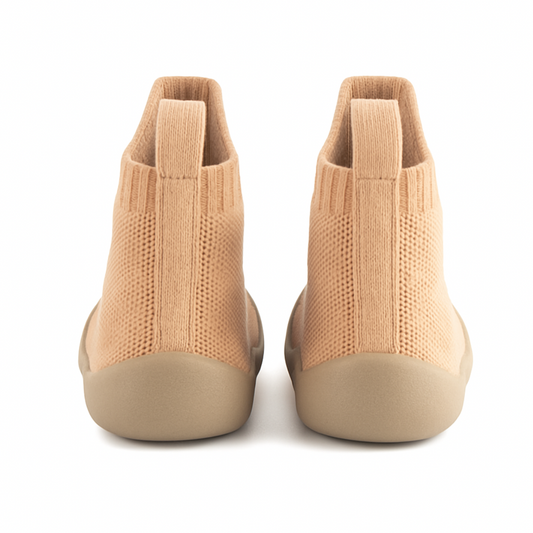
A Quick Survival Guide to First Molars
Picture this.
Your tiny toddler is sleeping through the night. They’re eating all kinds of foods and are even starting to get the hang of using that little fork!
Every day you look at this peak cuteness and just fall so much deeper in love with your mini.
Life is good. You got through so much over the last year. This whole mom thing? You’re just crushing it.
And then one day you see it. A bit of drool slides right on down your child’s chin, and onto their shirt.
No. No, it can’t be.
Toddler teething has arrived. Sorry to say, but you’re in for a ride!
When they were teething as a baby everything was still kind of new, right? Maybe you were still on an irregular schedule or used to the fussiness of baby life.
But a toddler growing teeth? Oh boy. This one takes a bit more to gear up for. After it’s all said and done, you’ll survive.
Know What’s Normal
Teething in general can feel like it goes on forever. Forever!
The truth is, this begins around 6 months of age. A full set of chompers won’t be complete until your child is probably able to put on toddler shoes all by themselves. We’re looking at around 3 years old.
Maybe you’re already a pro at watching those tiny teeth sprout up. Or maybe you’re looking at your infant wondering exactly how long does it take for a tooth to break through the gums?
The adventure that is teething is quite the doozy, especially if you’re breastfeeding. Moms who know, understand this on a deeper level. Because, ouch.
And while toddler teething isn’t that much different from when they were 6 months old, it’s still hard to watch.
Now you’ve got this walking, semi-talking little human who has likely figured out a very effective way to get your attention. So with some big ‘ol chunky first molars breaking through those gums, life might experience a touch of turbulence.
When your child says a jumble of sounds and whines, your super Mom translation abilities can clearly hear, “My gums hurt!” The heartbreak of having to sit by and watch is a lot.
You’ll see again the same signs of teething. Lots of drooling, chewing on things, general crankiness and a potential small spike in temperature.
But to make sure nothing bigger is going on, consult your pediatrician if your child has a fever or diarrhea. Any temperature over 100.4 could mean your child is fighting something else, making the teething experience worse.
Have Reinforcements Ready
Being ready for teething round two (or three …or four) can be really simple, actually. What helped a few months prior might be exactly what your toddler is needing now.
Stick to all things cold. Frozen washcloths, teething toys and pacifiers. Keep an extra set of cold teethers in the freezer so you aren’t left scrounging for them later.
Spruce things up with some fresh, stylish bibs that can help prevent getting a chest of drool, adding even more discomfort.
For your now teething toddler, try adding some crunchy snacks, fresh toys to chew on, and their favorite lovey for good measure. Cold cut up grapes and strawberries for dessert give a sweet, cool treat to your hard working tot.
Fan of the soothing gel and tablets? You might want to pass on these. According to studies, the safety and long term effects of these teething remedies might be not so good afterall¹. Children’s Advil or Tylenol for teething are recommended instead.
Another really helpful remedy is brushing teeth! During your twice daily brushes, take a little extra time to give those swollen gums some attention. Your toddler will benefit from having the extra pressure applied to their achy gums.
Make Your Own Rules
Though it’s said that teething doesn’t necessarily disrupt sleep, every child is different. A less patient teething tot could be taking things a lot harder. Others might wake up with new teeth, as if nothing happened.
How long does teething fussiness last, you ask? Could be a few days or up to a week.
With that in mind, the fear of losing that precious sleep routine is too real. Afterall, you worked so hard to accomplish smooth nights. The idea you could lose that might be enough motivation to really try and stick with a sleep plan, no matter what.
When it comes to figuring out how to soothe a teething baby at night, you are the best person to make this call. If your little one seems to be experiencing real pain, don’t anchor yourself to rules that don’t feel helpful.
When it comes to surviving two year molars, you can definitely change your approach. Want to snuggle with your munchkin until they drift back to sleep? Go for it. Feel they would do best without you coming into their room? That’s right too.
The point is, routines and sleep patterns might be disrupted. If you choose to go off path, trust your instincts. You know your child best and you know how to best navigate the days or week when you have a toddler teething molars.
Sources:
1 - https://www.mayoclinic.org/healthy-lifestyle/infant-and-toddler-health/in-depth/teething/art-20046378









